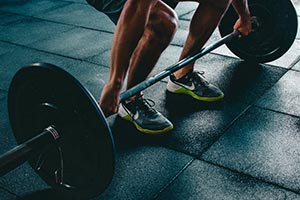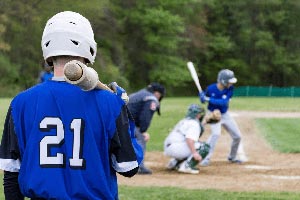A torn hip labrum, also referred to as a hip labral tear, is an injury to the labrum, the ring of cartilage that lines the rim of the acetabulum or hip socket. While a torn labrum occurs mainly in athletes, it can happen to anyone. The risk is also particularly high in people who have structural problems in their hips.
Treatment for hip labral tears depends on the severity of the injury. For minor tears at the edge of the cartilage, physicians may recommend exercises as part of a physical therapy program to reduce pain, restore range of motion and prevent surgery.
However, not all exercises are beneficial for hip labral tears. Some may cause further damage to the hip labrum as well as stress the hip joint and surrounding muscles. In turn, this could lead to more significant symptoms, delayed healing and the development of other hip-related injuries.
This article delves into torn labrum injuries and the exercises you should avoid if you have been diagnosed with one. We also provide an overview of the treatment approaches used for hip labral tears.
What Is a Hip Labral Tear?
Before discussing torn labrum injuries, it’s essential to understand more about the hip labrum. The labrum’s primary functions are to enhance hip stability and protect the hip joint.
Here are some of the key functions of the labrum:
- Provides cushioning and shock absorption, absorbing impact and distributing stress more evenly across the joint while running, jumping and landing
- Enhances the stability of the hip joint and prevents excessive movement while performing twisting or rotating motions
- Keeps synovial fluid, which lubricates the joint, within the joint capsule, preventing hip bones from grinding against each other and supporting smooth, pain-free movement
A hip labral tear can occur for various reasons, such as:
- Traumatic injuries to the hip, often from playing contact sports or being involved in a vehicle accident
- Structural problems in the hip, such as femoroacetabular impingement (FAI)
- Joint wear-and-tear caused by repetitive motions, like twisting or pivoting, while playing sports like golf and tennis
If the hip labrum is torn, the injury can result in symptoms like:
- Pain in the hip, groin, or buttocks, especially while walking or running
- A catching, locking, or clicking sensation in the hip joint
- Stiffness or limited range of motion in the hips
However, in some cases, hip labral tears can present no symptoms. This is why this injury can sometimes go unnoticed until it has worsened, which can take years.
Grading of Hip Labral Tears
Torn labrum injuries may be classified according to various factors, including the size and depth of the tear, involvement of nearby cartilage or ligaments, as well as the stability of the joint. This often refers to the size and depth of the tear, with grades typically ranging from minimal to complete tears.
Torn labrum injuries may be classified according to various factors, including the size and depth of the tear, involvement of nearby cartilage or ligaments, as well as the stability of the joint. This often refers to the size and depth of the tear, with grades typically ranging from minimal to complete tears. Here is an example of a grading system your doctor might use to classify your hip labral tear:
Grade 1: This is the least severe grade . This tear is minimal and doesn't extend into the cartilage.
Grade 2: This grade involves a more significant tear of the labrum, but the tear hasn't completely separated the tissue or reached the cartilage. The joint itself remains stable.
Grade 3: This grade indicates an unstable tear, meaning the labrum is significantly damaged and the joint becomes unstable. However, the torn labrum hasn't shifted out of its original position.
Grade 4: This is the most severe grade, with a large, unstable tear that displaces the torn labrum tissue outward.
Exercises to Avoid If You Have a Torn Hip Labrum
As mentioned in a previous section, your doctor may recommend physical therapy as part of your treatment for a torn labrum. This typically involves exercises that strengthen the muscles supporting the hip, such as the quadriceps, the gluteal muscles and the hip flexors. These movements can help reduce pain, increase range of motion and lessen stiffness.
However, not all exercises are helpful for a torn labrum. The following are some examples of exercises you should avoid if you are recovering from a hip labral tear:
Lifting Heavy Weights
Lifting very heavy weights, especially in exercises that target the hips or require the hips to bear the brunt of the weight, can worsen the injury. Some examples of movements your physical therapist or doctor may ask you to avoid in this category are deep squatting and sports that require large rotation of the hips.
After a corrective exercise program, you may be able to return to weightlifting should you wish to. Your doctor or physical therapist will advise you on what movements you can do in the meantime and how to ease back into lifting once your hip labral tear has healed.
Specific Yoga Poses
Some poses or postures in yoga can aggravate a torn hip labrum. These include:
- Poses that require extreme internal rotation or turning the hip inwards, such as Lotus and Cow Face
- Hip-opening poses like Half-Pigeon, Pigeon, Marichi and Hero
- Poses that require hip flexion, like Malasana and Frog
- Twisting yoga poses like Revolved Triangle and Revolved Side Angle
High-Impact Activities
Running, jumping, plyometrics and other high-impact activities can cause pain and discomfort as well as worsen the tear.
Sports Involving Twisting Motions
Football, tennis, golf, ballet, soccer, and hockey require twisting and pivoting, which can aggravate the labral tear in the hip. Twisting motions can stretch the labral tear further and create microtears in the labrum.
Deep, Static Stretches
While stretches are typically part of therapy, your care provider might ask you to focus on dynamic poses instead of deeper, static stretches. These kinds of stretches, which involve holding a stretch for long periods, can pull on damaged tissue, compress the tear against other structures of the hip joint and result in increased pain and stiffness.
Get Treatment for Your Hip Labrum Tear
After exploring hip labrum tears and the exercises to avoid if you have one, it is clear that seeking professional advice is crucial. An experienced and qualified physician can assess factors such as the grade or severity of your hip labral tear and your recovery goals.
At American Hip Institute, we will create a tailored treatment plan that may include exercises that are safe for you to do, support healing and help prevent long-term damage. Our team is dedicated to providing personalized and cutting-edge care to help you return to the activities you love without pain. Contact us to learn more about what we do or to book an appointment.




